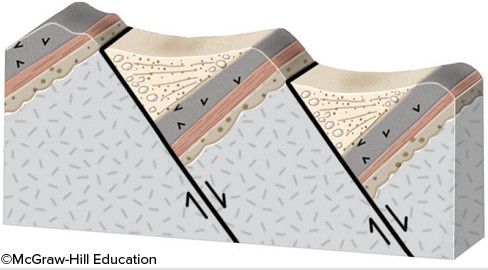What will happen during movement on these normal faults? 
A. The crust will thicken and the region will be uplifted.
B. The blocks will be uplifted or downdropped with only minor rotation.
C. The crust will thin and the region will be uplifted.
D. The fault blocks will rotate in the same direction, like books sliding on a shelf.
Answer: D
You might also like to view...
The largest population concentration in Southeast Asia is
A) China and Japan. B) the island of Sri Lanka. C) the rivers and delta region. D) the Island of Java. E) the Islands of the Philippines.
Which of the following can be formed when the ammonium salt derived from reaction of a carboxylic acid and an amine is heated to a sufficiently high temperature?
A) an amide B) an amino acid C) Either a or b, it depends on the identity of the salt. D) neither a nor b
Orogens are remarkably well correlated with the plate tectonics model
Indicate whether the statement is true or false
Global positioning systems (GPS) can "know" their location by
A. relating changes in detected radiation to changes in the position of the Sun. B. continually measuring changes in angle to a stationary reference point, such as a streetlight, in the area of the receiver. C. relating slight changes in magnetism and gravity to changes in the distance and direction of movement from the point at which the location of the receiver was last calibrated. D. measuring the time required for radio signals from four or more satellites to reach the receiver.